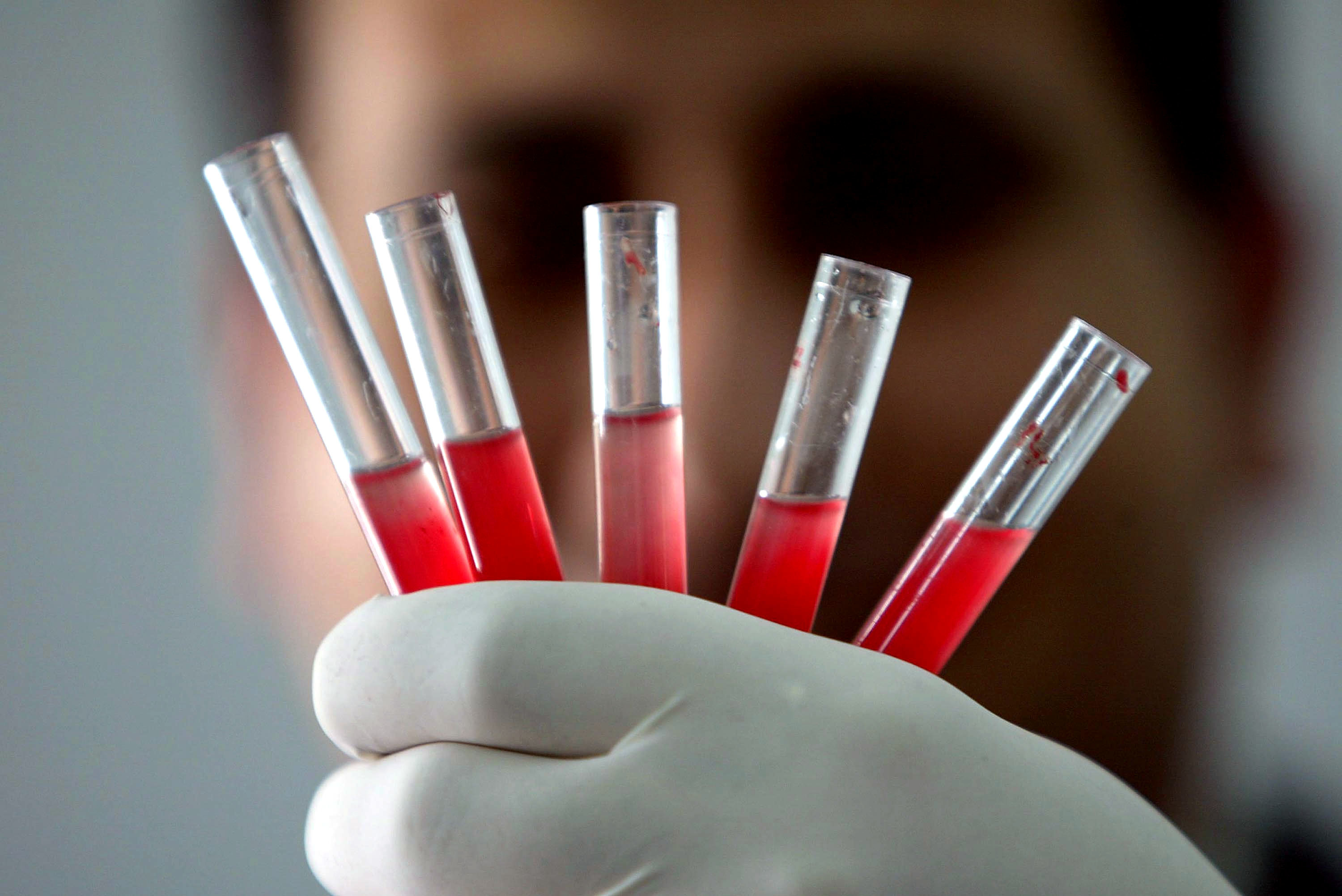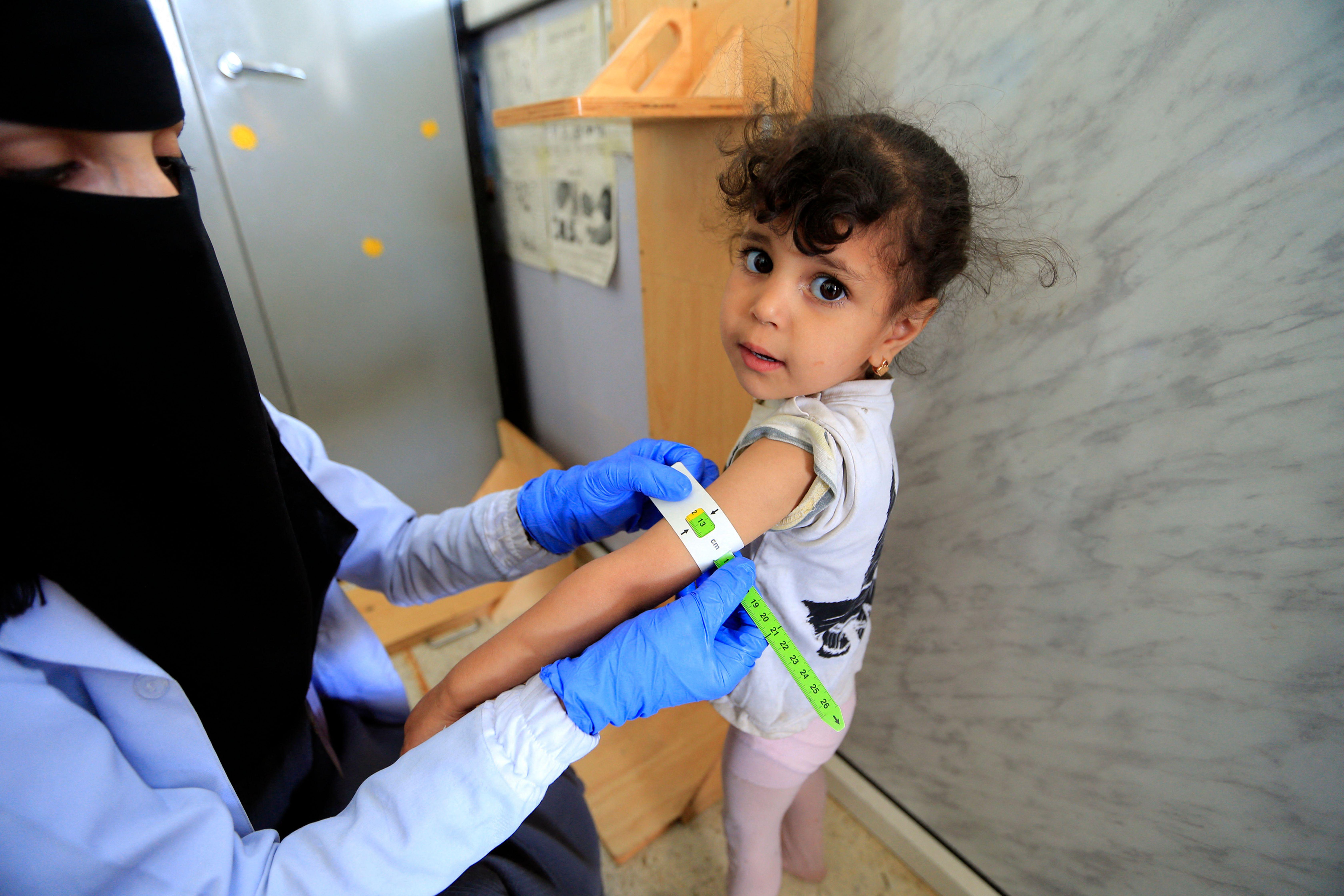PETER JAWORKSI: Let me tell you about the biggest industry you've probably never heard of. I'm talking about the blood plasma industry. The therapies made from plasma help people who suffer from primary and secondary immune deficiencies. If you ever have a serious burn you'll probably need albumin. Albumin is also used to help with a variety of cancers. And then there are people whose blood doesn't clot properly, people with Von Willebrand disease or people who have hemophilia. That's what the plasma therapies are used for. And demand for especially immune globulin. The demand for immune globulin is outstripping supply in almost every country.
Did you know that the United States supplies more than 70 percent of all of the plasma in the entire world that is used to manufacture plasma therapies? The whole world is dependent and reliant on the United States of America, on people in the United States who give their plasma twice a week on a regular basis.
Exports of plasma from the United States account for 1.6 percent of total exports by GDP according to The Economist. The New York Times said it was 1.9 percent. That's not correct. That number by the way, 1.6 percent of total exports. That's more than aluminum. It's more than steel. It's the biggest industry you've never heard of. It's about $26 billion I think annual industry. That's going to double very soon. People are anticipating it to be more than a $40 billion industry by 2040. So we're anticipating incredible growth, ten percent per year. That growth is stable. It's stable growth. There are still countries that do not realize that these plasma therapies are effective. They simply don't have the resources or the means to properly diagnose people or to give them access to these plasma therapies. But once they come online that's going to increase demand as well.
Out of all the countries in the world only the ones that pay people to make that donation are self-sufficient in plasma therapies. And even the ones that pay not all of them are, in fact, sufficient. So there are only seven countries in the world that legally permit paying people for plasma donations – Germany, Austria, Hungary, Czechia or the Czech Republic, parts of Canada. And I'll talk about Canada in a second. The United States, of course, and China. Those are the seven countries in the world that permit payment. Every other country that does not allow payment for plasma donations imports plasma therapies that make use of plasma primarily from Americans. Germans as well, but primarily Americans. That's an astonishing figure. This industry is growing so fast. In the United States alone the number of plasma centers has more than doubled. In fact, it's more than tripled since 2004. There are currently over 824 plasma centers in the United States of America.
So here's a question. We know that paying people for plasma works. We know that it's effective precisely because of what I just said. All of these countries depend on paid plasma to make the therapies and only the countries that pay have enough of them. They produce actually more than enough. They have more than enough. They're able to export to other countries and thank goodness. Imagine what the world would be like if the United States didn't pay for plasma. We wouldn't have enough plasma therapies. vAnd at the moment these plasma therapies are used for rare blood disorders and for rare diseases. Very few people are affected by it. Of course that still accounts – there's still thousands of people around the world who use these medicines on a regular basis. But imagine what would happen if it turns out that plasma is useful for something like Alzheimer's, is useful for something like heart disease. If it turns out that it is useful against an ailment, a disease, a problem that very many people are affected by then demand for these therapies is going to go through the roof. We need to be prepared for that and we need to do what works. And what works is paying people for plasma donations.
So let me talk about Canada for a second because this is where I've done the most work on this issue. So at the moment British Columbia, Alberta, Ontario and Quebec – this is where more than 80 percent of Canada's population lives. It is illegal for a commercial enterprise to come in and pay people for plasma donation. Meanwhile, Canada continues to import therapies made with American paid plasma all along. And those numbers are increasing. So why did they ban paid plasma? What kinds of arguments did people make in Ontario, in Alberta and British Columbia? I tried to remember all of those arguments and I've got like a little acronym which I call SSACE. It's Safety, Security, Altruism, Commodification and Exploitation. The first one, safety, is a nonstarter. Don't forget that Canada imports therapies made with paid plasma. So the question of whether or not it's safe to pay people for plasma donation is not a realistic question. The law doesn't ban paid plasma and it doesn't say that it's going to stop importing paid plasma.
And by the way, every medical expert body around the world says that medicine made with paid plasma is just as safe as medicine made with unpaid plasma. The say it's just as safe. Not a little bit less safe. They say it's just as safe. The safety issue is simply a nonstarter. It's not a real issue. The security issue is interesting. It's an empirical question and that question is if we allow paid plasma will we get enough unpaid blood. These are two different kinds of donations. Plasma is the yellow liquid inside of our veins. It's about 55 percent of the liquid in our veins. When you donate plasma usually you do it through plasmapheresis. There's a big machine, takes all of your blood. It separates the plasma from your red and white blood cells and your platelets and then it returns the red and white blood cells and the platelets back to you and keeps just the plasma. A whole blood donation meanwhile takes less time. It takes about 30 minutes as compared to one-and-a-half to two hours. That's how long plasmapheresis takes.
It takes less time but it takes all of those things. What that means is that if you donate plasma you can do it twice a week safely. But if you donate blood you can only do that once every 56 days. Now we don't pay for blood and the concern is that if we allow both paid plasma and unpaid blood to operate side-by-side then people are going to choose the option that you get paid for rather than the option that you don't get paid for. I think that's a very serious worry. It is an empirical question. A colleague of mine and myself we have a paper forthcoming that appears to show that there is no effect on unpaid blood donations from the presence of paid plasma centers, but you'll have to look up that paper. A Health Canada expert panel said the same thing. In the United States, for example, blood donations operate side-by-side with paid plasma operations and it's not that big a deal. Same with in the Czech Republic. The same is true in Austria as well. So the security issue is another issue that was raised. I think it's the most important argument that the other side on this debate have raised. My own view on it is that it is insufficient on its own to justify banning paying people for plasma donations.
The other three are moral objections and I'll try to deal with them quickly. The first one, altruism. The argument is that people should give plasma out of the kindness of their hearts and not because what they care about is the thickness of their wallet. And so we object to paid plasma because we think that like people are doing it with the wrong motives. So the first thing to say is that if you're comparing getting enough medicine that will save lives to the motives of the people that provide the plasma it seems like the saving lives is much more important. So even if people aren't giving it out of the kindness of their hearts that doesn't matter as much as saving as many lives as we possibly can. That's the first thing to say. The second thing to say is that I think it, in fact, is a kind of prejudice. It's a kind of stigma that we associate with people who sell their plasma. Because consider none of us, I'm a professor. Guess what? I get paid to be a professor. But do I, am I a professor because that's the way that I maximize my income? No, I take seriously my obligation to let people know about things that are important, to try to bring up the next generation. And the same is true of teachers all around the world.
And we do see that teachers can both be paid and operate altruistically simultaneously. Human motivations are very complex. We think the same thing of nurses. We think nurses get paid to be nurses. Same with doctors. They get paid to be doctors. And yet we think that it's compatible with that for them to operate altruistically. In a way it's puzzling in the plasma debate in particular because everybody who has anything to do with plasma gets paid. That includes the phlebotomists, the nurses, the administrators. Everybody gets paid except for the person whose plasma it is. And we worry about altruism just when it comes to the person whose plasma it is. Why aren't we concerned about the altruistic motives of nurses, for example, or doctors. So that's why I say that argument kind of reveals a sort of prejudice. It's not a very good one. The commodification worry goes something like this. If we put a price tag on a part of a human being then it's possible that people are going to start thinking of themselves as having all of these different price tags.
So they don't think of themselves as being a person, as a whole person. They don't think of themselves as being sacred in a way. Instead they start thinking of themselves as having different price tags and they're like well what am I worth. Well actually my blood is worth this much, my plasma is worth this much and my hair is worth this much, et cetera. The worry is that if we allow a price tag on a part of us then soon we're going to think of people as commodities rather than as persons. And my response to that kind of argument is first, that's an empirical claim and I haven't seen any studies that show that, for example, in the United States people are more likely to think of themselves as commodities as compared to in Ontario or British Columbia where it's not legal to pay people for plasma. I find that argument a little bit dubious barring empirical evidence. And secondly, I don't know why anybody thinks that at all. I mean we pay for labor. Why doesn't that have the effect of commodifying persons. Why is it that if we pay for plasma then commodification will occur, but not in all of the other standard ways. Things that we constantly pay for and yet do not result in commodification.
And then the last one which I think is the most important moral argument against paying people for plasma. It's exploitation. If you pay attention to the news in the United States and all over the world, if people are writing about paid plasma they often raise the specter of wrongful exploitation. Because here is a fact. Guess who sells their plasma? It's not professionals. It's not professors like myself. It's students and it's people who are poor. Poor people – the plasma centers are located in zip codes that have higher poverty rates and lower median and household income rates. So it is the poor that sell their plasma. And so that raises the question of whether these people are exploited or not. I don't think that they are. I think, in fact, that the amount of money that people are paid to sell their plasma is, in fact, a good deal. The global price of plasma is about $200 per liter. So the unit is a liter. It's about $200 per liter and donors or people who are paid for plasma receive about $50 for that one liter.
Typically people donate about 810 to 880 milliliters and so it takes about one-and-a-quarter donation to make a full liter of plasma. So people get paid $50 and $200 is the total price. That's a really remarkable, that's a good deal. That's not an exploitative deal. The division of the benefits is fair in my judgment. Second, there's still an open question like what good do we do – what has Ontario done? Ontario has said we're not going to pay people for plasma. That didn't result in $50 in the pockets of people who need the money. When they banned paid plasma they didn't replace that with a tree where you just grab money from that tree. No, they simply removed an option. How did that improve the lives of the people who need the money and are selling plasma maybe primarily for the money. Although footnote, don't forget I do think that most of the people that sell their plasma do it both for the money as well as out of concern for their fellow neighbors. So you don't really make people better off by removing those options.
Now if it as something that was very risky then that would be a different matter. We're not talking about paying people for kidneys. We're talking about paying people for plasma which is renewable. It's renewable and donating it is safe. It's not entirely safe. It's not 100 percent safe, but it is not risky. We are encouraging people to donate plasma. So that's my response to the exploitation argument. That's my response to all of the arguments against it. And none of those arguments overcome the fact that we can get high quality plasma for plasma therapies. We can get more of it. And countries like Canada where I'm from, we're a wealthy country. We shouldn't just be drawing on the global supply of plasma. We should be contributing to it. We are not contributing to the global supply of plasma. We are taking from it. It's just as safe as unpaid plasma. There's evidence, there's substantial proof that paying people for plasma will work. The demand for these medicines is growing significantly and we are simply not equipped to do what we need to do unless we pay donors. It should be legal to pay people for plasma.





